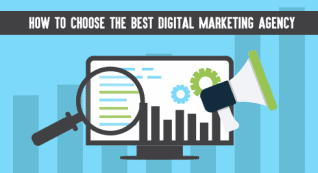Is your SEO plan working well enough? How can you be sure that your efforts generate tangible results? What can you do to enhance the functionality of your website?
You can get the answers to all of these questions by monitoring the relevant performance metrics.
Table of Contents
What Is KPI?
KPIs serve as a monitoring platform that helps you determine which strategies are effective and which are not. Most importantly, keeping an eye on the right KPIs is the best method to save time, news, and money by avoiding activities that don’t result in the desired profit and sales.
In this article, we’ll highlight the crucial signs that marketers need to be aware of.
Organic Traffic
Its growth indicates you’ve succeeded in your major SEO objective of increasing the volume of people who view and visit your website. This is also known as a pageview.
You can easily track daily searches in your site traffic if you use Google Analytics, which you should do. Go to the “Audience > Overview” report, choose the “Organic Traffic” field under “Add Segment,” and then click “Add Segment.”
Search Rankings
It’s no secret that the better your website performs for the relevant keywords, the higher its ranking.
A crucial KPI is search rankings because they are a direct indicator of how well your SEO is working. Once you get higher search rankings, you will soon achieve your other goal, this could be generating visitors, leads, and conversions.
Monitoring your rankings for the relevant keywords is also crucial. As a result, even if your website’s “Jeans” section tops the search results for “black and white vertical striped thin jeans for women,” your site traffic will not increase much.
Search Visibility
The frequency with which your domain shows in search results for the keywords is known as search engine visibility.
Even before your website starts bringing in visitors, you can see the positive dynamics by monitoring search visibility. As for all your SEO-related effort, this score may be a major motivator. If you want to keep track of the initial effects of website improvement, a search engine visibility score is quite helpful.
The score for total impressions can be found in the Performance report. An impression is tallied each time a user accesses the search engine results page that includes your URL.
Pay Per Click
In contrast to paid ads, there is no fee associated with each click from an organic search result. However, organic traffic can come at a price.
Organic Pay Per Click (PPC) refers to the price you pay for each visitor who accesses your website via organic search results. This cost can be calculated with a formula.
ROI
You can track the ROI (Return on Investment) of each of your search engine marketing campaigns. Also, you can assess whether the net profit justifies the cost of website optimization and online advertising by calculating SEO ROI.
Furthermore, the formula to determine your ROI percentage is as follows:
Cost of Investment / (Gain from Investment – Cost of Investment)
Natural CTR
The click-through rate (CTR), a performance indicator, measures the proportion of people who click on your link to those who view the entire set of search results. High CTR, therefore, equals high traffic.
CTR is a significant ranking factor used by search engines. Even high rankings, for instance, won’t help you draw in more visitors if your search snippets don’t look engaging enough. As a result, your CTR is far from satisfactory. Low CTR indicates to search engines that your website doesn’t live up to customer satisfaction, which could lead to lower rankings.
Branded Traffic
Branded traffic is the volume of visitors that comes from users who entered search keywords containing your business name. Essentially, branded traffic should be your main KPI if building brand awareness is important for your company (and it should be).
These kinds of searches produce the highest conversion rates since users who use branded keywords are already aware of what they want.
Customer Lifetime Value (CLV)
Client Lifetime Value (CLV) is a metric used to calculate the financial contribution that each customer makes.
Furthermore, Client Lifetime Value aids a business in determining which SEO-related activities have the biggest positive financial impact.
Conclusion
Setting goals is a difficult task for your e-commerce business.
It’s a serious task that requires careful thought, teamwork, and, most importantly, the ability to deliver what you proposed in order to reach the goals.
Furthermore, it is time-consuming to track every single metric that is currently in use. Based on the goals of your project, you should choose your own set of KPIs.
This half-art, half-science marketing strategy is one that eMojo’s professional team has mastered with proficiency, and it has been shown to produce measurable and worthwhile results.


















